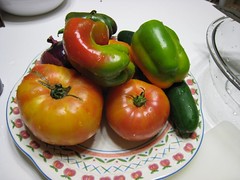OS X is the operating systems of Apple's computers, and sometimes their requirements exclude Macs that would otherwise be able to use the operating system. Apple updates their OS on a pretty regularly annual cycle, but seems to rather randomly exclude Macs and upgrading their version of OS X. This entry is mainly a reference to examine the cycle and determine predicted lifetimes for Apple's computer lines.
OS X 10.2 (Jaguar) - OS X 10.5 Leopard
Since my Powerbook G4 was my first Mac, this is where my OS timeline starts. This portion of the timeline is largely irrelevant, as Apple transitions from PowerPC to Intel further down the line, and phases out all the PowerPC architecture computers from OX completely after Leopard.
OS X 10.4 (Tiger) (April 2005 - November 2007) (Final Security Patch Sept. 2009)
Tiger was the first version of OS X to support Intel Processors; this version of Tiger was packaged only with the first set of Intel Macs. Later Intel Macs came with later versions of OS X.
OS X 10.5 (Leopard) (Oct 2007 - August 2009) (Final Security Patch May 2012)
My 2002 800Mhz PowerBook G4 is functionally capable of running Leopard, but ran too slowly to meet Apple's satisfaction. While the 800Mhz PowerBook G4 was the top of the line upgrade when I bought it in 2002 (the lower configuration was 667Mhz), Apple tends to exclude computers from OS X on the basis of Mac line generation and CPU type.
OS X 10.6 (Snow Leopard) (Aug. 2009 - July 2011) (Last Security Patch Sept 2012)
Snow Leopard is the first version that is Intel only, which excludes all the PPC Macs.
OS X 10.7 (Lion) (July 2011 - Present)
The 2006 MBP is not functionally capable of running Lion because Apple decided Lion should require a 64-bit instruction set, and the Intel Core Duo on the early 2006 MBP uses a 32-bit instruction set (wheras the Late 2006 has a Core 2 Duo which is a 64-bit instruction set).
Lion requires: an Intel Core 2 Duo, Core i3, Core i5, Core i7, or Xeon processor. This excludes the first generation of Intel Macs (MBP Early 2006, Early and Mid iMac 2006)
OS X 10.8 (Mountain Lion) (July 2012 - Present)
Mountain Lion requires the following computers:
iMac (Mid 2007 or newer)
MacBook (Late 2008 Aluminum, or Early 2009 or newer)
MacBook Pro (Mid/Late 2007 or newer)
MacBook Air (Late 2008 or newer)
Mac mini (Early 2009 or newer)
Mac Pro (Early 2008 or newer)
Xserve (Early 2009)
Some Macs Excluded from Mountain Lion, but not Lion: iMac Late 2006 (probably because the lowest configuration contains a 1.83 Ghz processor, 512 MB RAM, 160MB HDD, and a 667 Mhz System Bus. The Mid 2007 is a bit beefier with a 800Mhz system bus and 250MB HDD). For MacBooks, 2 years of MacBooks are excluded: (Late 2006-Late 2008)(Basically until the MacBooks have a 1066Mhz FSB and 2 GB of RAM). MacBook Pro (Late 2006) is removed (system bus is 667, and base RAM is 1GB), Macbook Air (Early 2008) (hard drive is below 120GB) , Mac mini (Early 2006 - Early 2009) (System bus is 667, no more than 1GB RAM) . MacPro 2006 (base RAM was only 1GB). There are no cases where Apple has continued to support a model based solely on the configured hardware. The oldest computers on the Mountain Lion approved list are the Mid 2007 iMacs and MacBook Pros (which typically have the newest hardware).
One of the things I notice is that further versions stop soon after the release of the subsequent version of OS X. This is likely that since this is the Mac operating system, Apple does not want to branch too far after the next version is made available. The security updates and such do not stop until much further down the line and seemingly at random (as few as 14 months, and as long as 33 months).
Since Apple excludes based on the Mac generation and a combination of the hardware, buying a higher end version of the Mac will not extend the lifetime of the Mac with regards to the operating system version. However, purchasing the current version (rather than the recently out of production version) may allow the Mac to survive one OS release further, with the caveat that Apple is sometimes fickle and excludes a massive amount of computers (such as with Mountain Lion).




